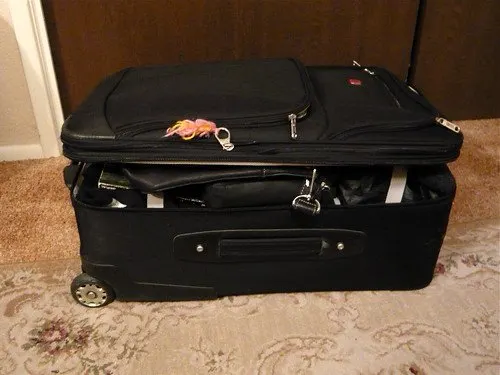Jet lag. It can be one of the most difficult side effects of traveling far distances, especially with children. The kids don’t care why they are tired, they just know they are and can rapidly turn into little monsters as a result. Wondering how to get over jet lag? use these tips to make the most of your next big trip!
How to Get Over Jet Lag
What is Jet Lag?
Jet lag is a sleep issue that can affect anyone who travels across multiple time zones quickly, usually by air.
Basically your body’s internal clock gets confused. It is synced with your home time zone and not happy that you aren’t sleeping when you should normally be asleep and waking when you are normally awake.
People experiencing jet lag often feel groggy, have difficulty staying awake and alert, and may even start having gastrointestinal issues. While jet lag is temporary, it can be prolonged if you don’t actively take steps towards getting over your jet lag.
Kids, who don’t quite understand jetlag and their bodies internal clocks, rely on us to help them get over jet lag.
Even Us Seasoned Travelers Have Had Our Jet Lag Moments
I remember standing in a corner of a grand stairwell in the renowned Musee de Louvre in Paris, pushing a stroller with a screaming toddler for what seems like an eternity.
I tried to avoid the gaze of kind and unkind stares from fellow tourists wondering who the mother of the screaming child was. In that moment I prayed to developed wings like the Bird Woman statue in front of me so I could to fly back to the comfort of home.

Photo By: BigStock/Wavebreak Media Ltd
You would think that as a seasoned family travel professional, I would have had more sense then to drag a sleep deprived, jet lagged, and hungry two-year-old to a museum. But, my eagerness to see the Louvre overtook my better judgment.
The following strategies were road tested the following day on the streets of Paris, and resulted in a dramatically more enjoyable day for all. Since children of different ages have different tolerance for lack of sleep, keep in mind that these strategies were road-tested with 2 and 4-year-old.
During this trip to Paris, we learned that we should always give ourselves an extra 2-3 days to get over jet lag. So basically, if you think that you need a week to see Paris, plan on being there 10 days in total.
How to Get Over Jet Lag Step 1: Start Off the Trip Well Rested

Photo by WordRidden
If you are anything like me, the days before you leave on a big trip is like cramming for finals. If you were not already busy enough, you now have to pack everyone’s bags, clean the house, pay the bills, stop the mail….the to-do list seems endless.
It is tempting to stay up late and expect to catch up on sleep when you go on vacation. That was a great strategy before you had children, but the reality for a lot of parents is that vacations with children and particularly young children aren’t exactly restful.
The best thing you can do to ensure a positive attitude when trying to overcome jet lag is ensuring that you are well rested. That means don’t wait until the last minute to pack and go through you pre-trip “to do” list. Your body will thank you.
How to Get Over Jet Lag Step 2: Re-Establish a Sensible Routine

Photo via Pixbay
The day you arrive at your vacation destination, let the children and yourself sleep as much as you need to catch up from the lack of sleep on the plane ride over. Just go with the flow.
On day two, you want to wake the children and yourself up at a decent time (no later than 9am) even if you’ve all been up a good part of the night struggling with jet lag. Muster every ounce of will power to wake yourself and those dead asleep (finally!) children.
Plan on a very easy first morning. This is very difficult when you are so eager to see a new destination you’ve been reading about for weeks. But your restraint and patience will pay off.
Make sure you get back to your hotel for an afternoon nap at a decent hour. Keeping within walking distance from where you are staying will allow you to avoid feeling stressed out about navigating new roads or public transportation. Just soak in the local area.
After a nap, which can be longer than usual but not so long that it pushes bedtime too late for the children or yourself, drag those jet lagged bodies out of bed and out into the fresh air for a walk to a park and to pick up groceries.
Make sure that you get home that first night at a normal bedtime hour and put the children to bed. Set your expectations for a difficult second night of sleep.
On the third day, repeat the routine of the second day, venture a little further if the night before wasn’t too rough. Even though you may be tempted, don’t pack the day full with activities and make sure to get that nap in.
By day three, the children’s new routine should be established and mom and dad can finally work on getting over their own jet-lag. Once the children are getting some solid night-time sleep, you can start being more loose with their naps and letting them nap in the stroller or child carrier.
How to Get Over Jet Lag Step 3: Start Slow With the Activities

Photo By BigStock/StanislavUvarov
After researching all the wonderful things there are to do at your destination, it is hard to think about starting out slow. You are pumped with adrenaline, despite your lack of sleep on the plane, and so are your children.
While you may have been used to pushing yourself before you had children, with children in tow, pushing it during the first couple of days can be miserable.
When you invest a few days to overcome jet lag, keep the most highly anticipated and vigorous activities for later in your trip, it ensures that you all enjoy them fully. When moving from one sight or activity to the next in a day, try not to cover too much geographical distance.
Traveling on public transportation with children with all the extra day gear can be very exhausting for parents and children. If you are planning on walking a fair amount, expect to put even a preschooler in a stroller. It will help you move quicker between sights, and allow your preschooler to save energy for enjoying the sights when you arrive.
On the first and second day, do not plan on doing more than one major site or two small activities during the day. There will be so much extra energy expended as getting your bearings and just absorbing the new environment.
How to Get Over Jet Lag Step 4: Stay Flexible

Photo via Pixbay
Although I do have a tendency to be a control freak, when on vacation with children who are trying to overcome jet lag, I am reminded that staying flexible can go a long way in helping anyone keep a good attitude.
Planning for unpredictability will help parents to go with the flow. Accept the fact that everyone needs time to adjust and that it can happen at a different pace for each person.
But do not assume that flexibility means not setting a routine. It means eliminating activities as needed and readjusting plans in order to accommodate the establishment of a daily schedule.
It helps to plan for the adjustment period and stay in one place for a substantial length of time before moving from one town to the next. An easy pace at the start out the vacation will give you the freedom to be flexible later.
When planning your trip, create a small list of “must do/must see” sights, followed by a list of “nice to see” sights. If you get to any on the second list, treat it like a bonus. This allows you to be flexible and make better decisions on the fly when you are running out of time.
How to Get Over of Jet Lag Step 5: Arm Yourself With Snacks

Photo via Pixbay
Hungry children are often grumpy children. When children are trying to get over jet lag, they also tend to eat at strange times.
This is compounded when you are visiting a place where the food isn’t familiar to them. It is hard for a young child to settle down for food in an unfamiliar environment because there is so much to discover and process.
It seems that the best place to fill little tummies is in a stroller or car seat when they are sitting relatively still and strapped in. The rhythmic motion also keeps them calm enough to eat “subconsciously”.
Don’t worry yourself with the quality of nutrition in the first few days, especially if the foods available aren’t familiar to the child. A few days of less-than-ideal nutrition will not do a child harm.
The key is to offer snacks often and don’t stress out at meal times if they don’t eat. Their body clocks are adjusting and it’s hard to time meas until the new routine and schedule are in place. Offer lots of water throughout your day. Sippy cups are helpful for drinking on the go.
How to Get Over Jet Lag Step 6: Encourage Good Sleep Away From Home

Photo By:BigStock/famveldman
Hopefully your child is already sleeping well in the evenings at home. But, bringing along a few familiar things that help to provide consistency and comfort can go a long way to encouraging good sleep.
I am sure that any sane parent would rather die than not bring along that special lovie. So, that requires no explanation. But there are a few other things you can bring or do to help ensure a good night’s sleep away from home.
Try to get your child used to whatever sleeping environment he or she will be sleeping in ahead of time in the comfort of home. If you are using a portable crib, have the child sleep in it for at least a week before traveling.
If your child is used to sleeping alone, but will be sleeping with others while on vacation, get your little one used to it before you leave to minimize the stress while on vacation.
If your child is used to a dark room, travel with a dark sheet which you can drape over a window where you are staying to get the room as dark as possible.
My family loves the Peapod travel bed. It is not only lightweight, but you can place it on any normal bed for a comfortable but safe place for baby to sleep.
The best thing is that you can drape your sheet right over this tent to create a dark place for baby sleep in. All other distractions in the room are also blocked out from view by the dark sheet.
If you think that noise is going to be an issue for your child who is sharing the same room or a small suite/apartment, get your child used to sleeping with a white noise machine or app. This can help to mask noise, but also sends a familiar cue to your child that it’s time to sleep once they hear that familiar soothing sound of the white noise.
Traveling to new countries with children is a wonderful gift to them. Learning to overcome jet lag is part of the package that comes with most international travel. While it isn’t always easy, giving our children the opportunity to discover new lands, different cultures, and learning about varied human history is hugely formative. Bon Voyage.
Related articles:
- Great Things to do in Bermuda on a Family Vacation - April 8, 2025
- See the Northern Lights- 13 Amazing Glass Igloo Hotels in Finland - April 8, 2025
- 20 Incredible Things to Do in Costa Rica with Kids on a Costa Rica Family Vacation - April 1, 2025


